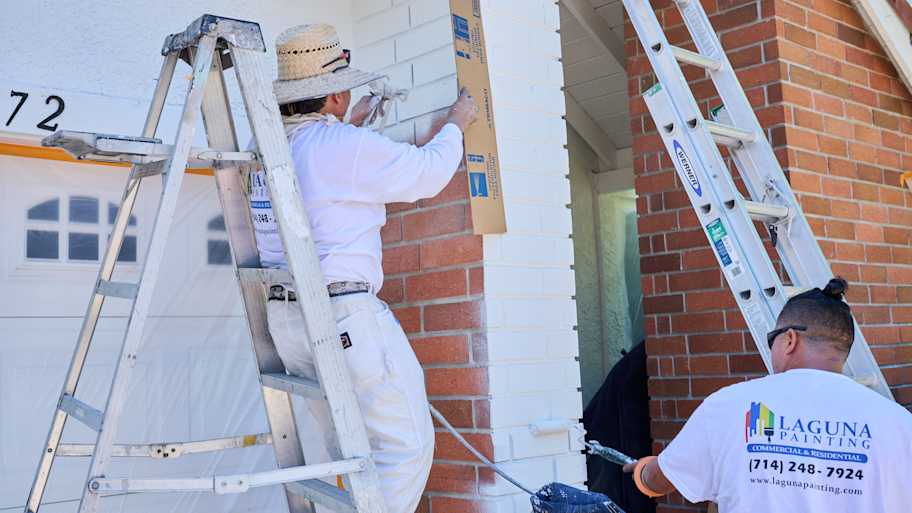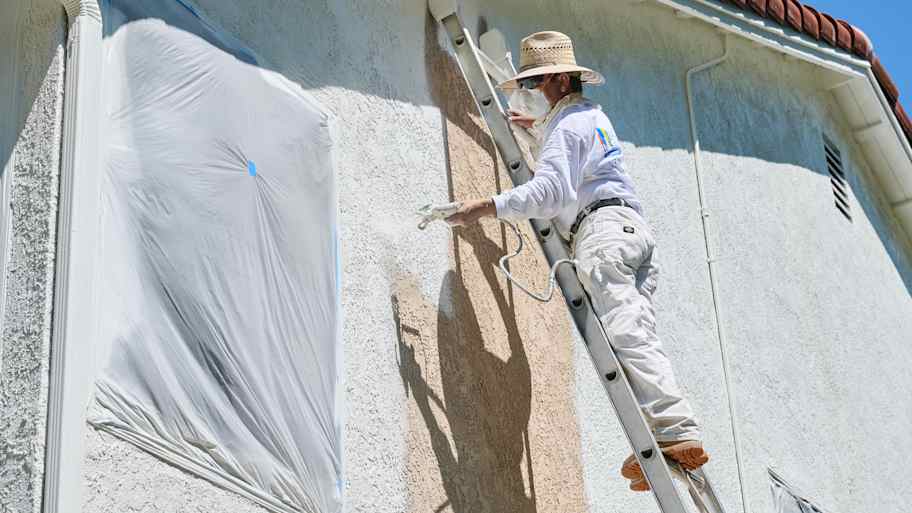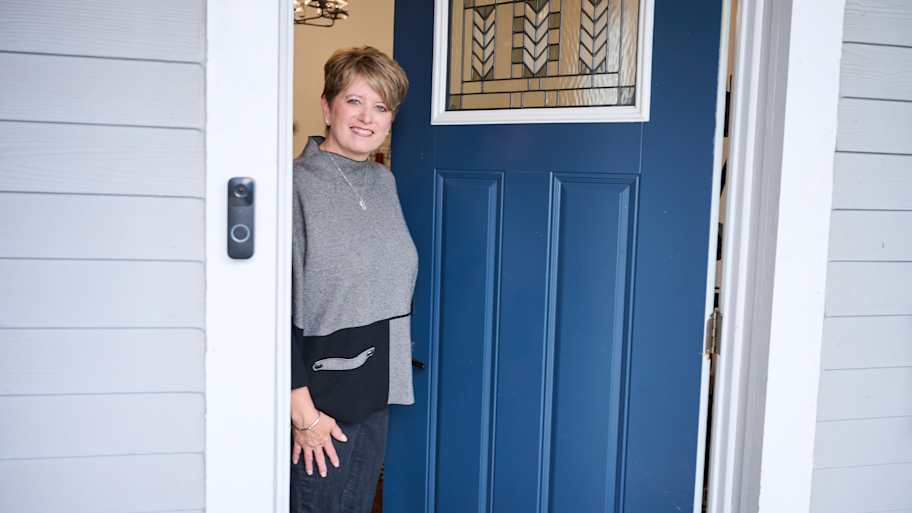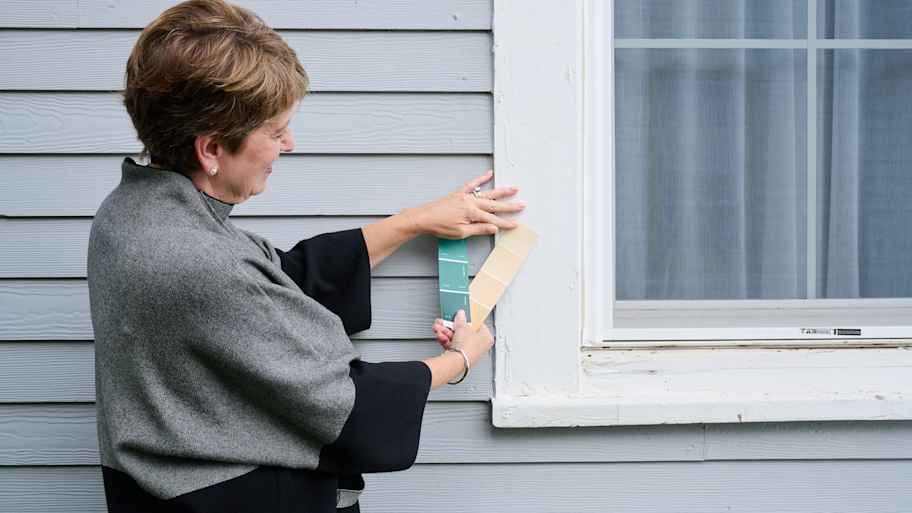How Long Does Exterior Paint Last? How You Can Make Your Paint Job Last Longer
The right prep, process, and preservation will keep your paint job looking fresh for longer


A great paint job not only boosts your home’s curb appeal, but also protects it from weather damage. Repainting your home’s exterior is a big investment, but your results will last up to a decade—if you do it right.
There are so many benefits to painting or staining your home exterior, and it’s worthwhile to learn proper paint prep, application, and maintenance tips to get it just right. Here are six tips for how to make exterior paint last longer.
1. Prep Your Home Exterior Properly
Proper prep is the key to making any paint job last. If you’re doing the painting yourself, follow the steps below. If you’re hiring a professional local house painter, ask them questions to ensure that all these steps are followed.
Clean the surface: Your paint won’t adhere properly to old paint or dirty, moldy, flaky surfaces. Power wash and scrape rough areas with sandpaper before painting.
Repair your siding: Damaged siding left unaddressed can cause paint to chip and flake. Replace any rotted boards and caulk thoroughly to seal them.
Use a primer: A high-quality tinted primer base coat beneath the color top coats can extend the life of your paint job by three to five years, helping smooth imperfections, improve paint adhesion, and reduce chipping, bubbling, and flaking.
If painting your house is a DIY project, use the right primer for your paint. If you’re using acrylic paint, you can use either water-based or oil-based primer. If you’re using an oil-based paint for your top coat, you should only use oil-based primer.
2. Use the Right Type of Paint
One of the most important exterior painting tips is to use the right type of paint. You’ll want a high-quality paint to protect the outside of your home. For most exterior paint jobs, acrylic latex paint works best. These versatile paints can be used over water-based and oil-based primers and offer several benefits over oil-based paints:
They won’t harden over time.
They help present blistering.
They don’t mildew as easily.
They’re better for the environment.
However, there are some cases where oil-based paints are the better option. Due to their ability to better repel water and resist wear, they can be ideal for painting steel and iron railings as well as steps, stoops, and porches that get a lot of foot traffic.
3. Use Good Painting Practices

When properly applied, paint gives your home a fresh look while protecting it from the elements. And doing the job right starts with the right equipment. Professional house painters have the tools and training to work efficiently, but if you’re attempting to paint your house as a DIY, you’ll need to take the following steps to ensure a long-lasting paint job:
Apply thorough coats: Any unpainted, exposed areas will be vulnerable to damage from weather, rot, and mildew. After applying primer, apply two coats of finish paint and verify that the bottoms and sides of all surfaces are completely covered.
Avoid heat and sunlight: Heat and direct sunlight make paint dry too quickly, creating an uneven finish with visible seams and brush strokes. Paint on the side of the house opposite to where the sun is directed, and avoid exterior painting on very hot days.
Avoid painting wet surfaces: Paint can’t adhere to damp surfaces, so wait a few days to paint after prep washing or heavy rain. Check the forecast before you start to make sure it doesn’t call for rain during your planned painting or drying periods.
4. Consider Your Landscaping
Whether you’re an avid gardener or just like to keep your lawn shady with trees, pay close attention to where you place your plants. Flowers, hedges, and trees that are planted up against your house can create moisture, leading to erosion and rot that can damage your exterior paint.
5. Keep Your Home Exterior Clean
Dirt, mildew, and other debris on your home’s siding or trim isn’t just an eyesore. When left unattended, this buildup won’t be rinsed away by rainwater and can cause sections of your exterior paint job to look faded or discolored.
The solution? Incorporate an annual cleaning into your home maintenance routine, hosing down or pressure washing patios and the undersides of overhangs. You’ll find products at your local paint or home improvement store specifically for cleaning siding and preventing mildew on home exteriors. You can also consult with your professional house painter for cleaning advice.
6. Repair Interior and Exterior Damage as It Occurs
Believe it or not, problems inside your home can cause problems with house paint on the exterior.
Keep your eye out for moisture issues. If you have a leaky roof, damp basement, or poorly ventilated bathroom, these can all cause exterior paint to peel, mold, or bubble. Prevent this by fixing roof leaks as they occur and using a dehumidifier in rooms that need it.
Issues with your exterior siding can take the form of water damage, rotting, splintering, and cracking. These can be caused by prolonged exposure to rain, wind, and snow, and you’ll often find them after the winter season. Repair any damaged wood siding as soon as you notice it to ensure that the problems don’t spread and lead to more expensive repairs down the line.
Frequently Asked Questions
You may or may not be able to paint over your old exterior paint. If the existing paint is in good shape, then you can paint a new layer on top. But if your paint is flaky, you'll need to scrape off the old paint before adding any new layers. Also, it’s best to use primer first to help your paint stick properly.
There are times when you should remove all exterior paint before repainting. This includes when you need to get rid of lead-based paint (which should be done by a pro), or if you need to apply a different finish than what’s already there. Your house may also have too many pre-existing layers of old paint, in which case you’ll be better off getting rid of the old layers first.
If you want the longest-lasting exterior paint, go with acrylic. You can choose from acrylic latex, enamel, or latex enamel. These types of paint can withstand harsh weather conditions and sun exposure. Additionally, matte and satin finishes are likely to be your best bet for exterior paint that can withstand moisture and cracking.
Choosing the best color for your home exterior should factor in longevity as well as your personal taste. To keep your house looking newly painted as long as possible, stay away from red paint. Although red homes pop and are quintessential for country-style barns, red paint tends to fade fastest in the sun. Go with earth tones if you want paint that best resists fading.





- 10 Benefits of Exterior Painting and Staining
- 8 Exterior House Painting Tips You Should Know
- When Is the Best Time to Paint Your House Exterior?
- 10 Common Painting Mistakes Homeowners Should Avoid
- What Is the Best Exterior Paint? Here Are the Top 6 Choices
- How to Prep a House for Exterior Painting in 8 Steps
- Types of Paint: Which Is Best for Your Project?
- How to Dispose of Paint Properly
- How Often Should You Paint a House Exterior? 6 Signs You’re Due to Repaint
- How Long Does Paint Last, and How Can You Tell If It’s Expired?















